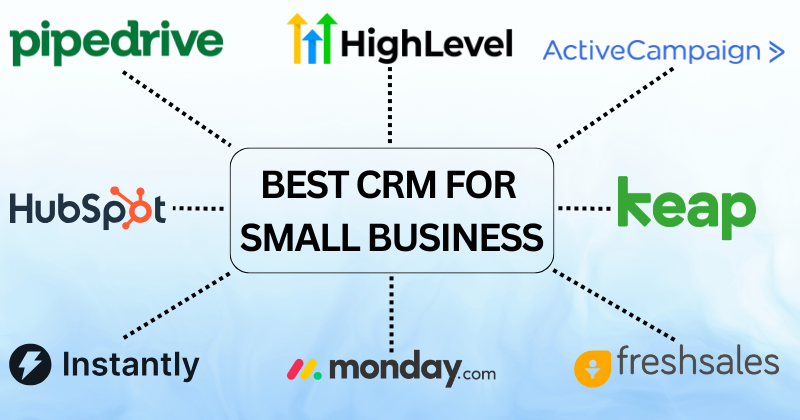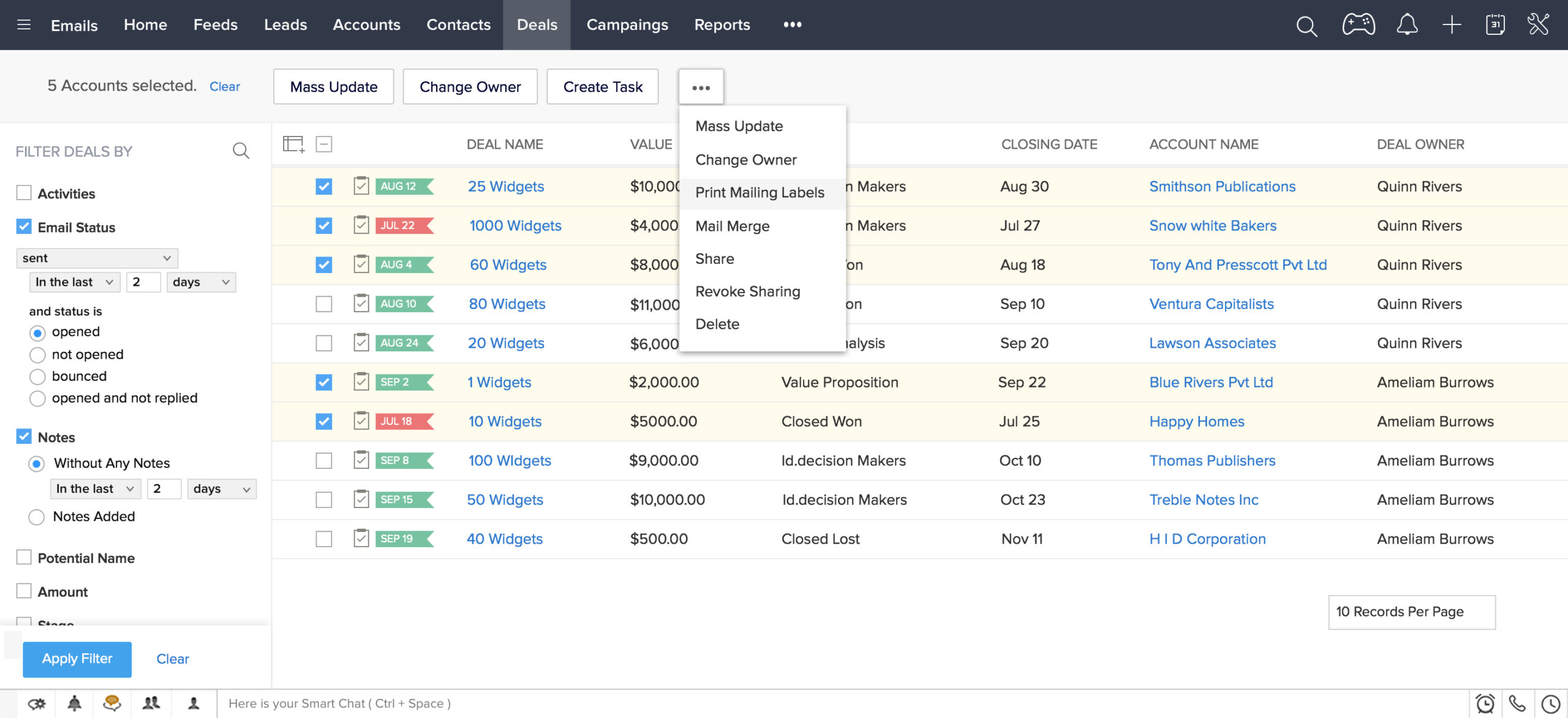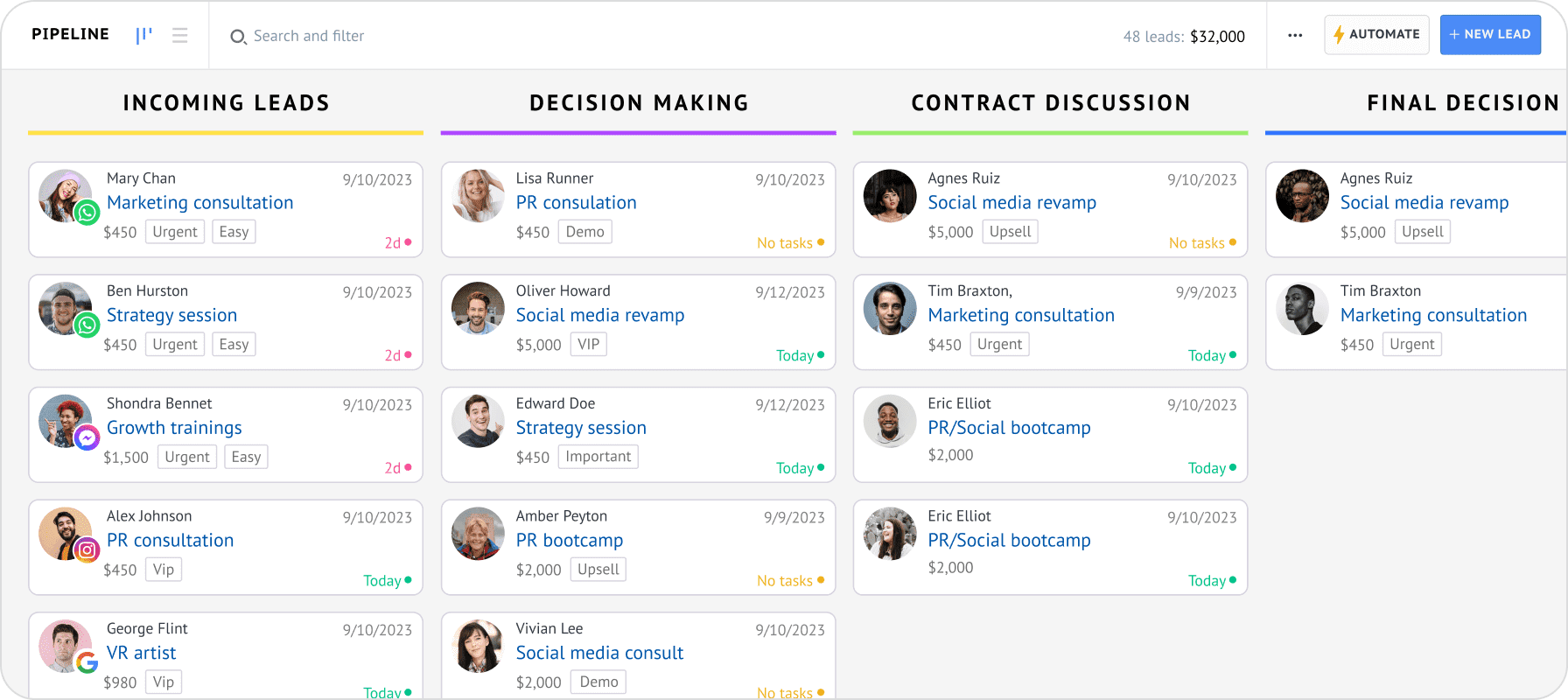
Boost Your Small Retail Business: Why CRM is Your Secret Weapon
Running a small retail business is a whirlwind. You’re juggling inventory, managing staff, crafting marketing campaigns, and, of course, keeping your customers happy. In the midst of all this, it’s easy to feel overwhelmed. But what if there was a way to streamline your operations, understand your customers better, and ultimately, drive more sales? The answer lies in a powerful tool that’s often overlooked by small businesses: Customer Relationship Management (CRM) software.
This article delves into the world of CRM specifically tailored for small retail businesses. We’ll explore what CRM is, why it’s crucial for your success, the benefits it offers, and how to choose the right CRM system for your unique needs. We’ll also cover implementation strategies, common pitfalls to avoid, and real-world examples of how CRM can transform your business. Get ready to discover how CRM can be your secret weapon in the competitive retail landscape.
What is CRM and Why Does it Matter for Retail?
At its core, CRM is a technology that helps you manage your interactions with current and potential customers. It’s more than just a contact list; it’s a centralized hub for all your customer data. This includes contact information, purchase history, communication logs, and even preferences. For a retail business, this translates to a treasure trove of insights that can be used to personalize the customer experience and drive sales.
Think about it: a customer walks into your store. With a CRM system, you can instantly access their past purchases, know their favorite products, and even be aware of their birthdays. This allows you to greet them by name, offer tailored recommendations, and create a sense of connection that goes beyond a simple transaction. This level of personalization is what sets successful retailers apart.
In the context of a small retail business, CRM matters because:
- It Helps You Understand Your Customers: CRM provides a 360-degree view of each customer, allowing you to understand their needs, preferences, and behaviors.
- It Improves Customer Service: With easy access to customer information, your staff can provide faster, more personalized, and more effective support.
- It Boosts Sales and Revenue: CRM enables targeted marketing campaigns, personalized product recommendations, and improved customer retention, all of which contribute to increased sales.
- It Streamlines Operations: CRM automates many tasks, freeing up your time to focus on other important aspects of your business.
- It Enhances Communication: CRM facilitates seamless communication across all channels, ensuring consistent messaging and a better customer experience.
The Benefits of CRM for Small Retail Businesses
The advantages of implementing a CRM system for your small retail business are numerous and far-reaching. Let’s break down some of the key benefits:
1. Enhanced Customer Relationships
At the heart of any successful retail business is strong customer relationships. CRM empowers you to build and nurture these relationships by:
- Personalization: Tailor your interactions based on individual customer preferences and purchase history.
- Segmentation: Group customers based on demographics, buying behavior, or interests, enabling targeted marketing efforts.
- Proactive Communication: Send personalized emails, text messages, or offers based on customer behavior or upcoming events.
- Improved Customer Service: Provide faster and more efficient support with easy access to customer information.
2. Increased Sales and Revenue
A well-implemented CRM system can significantly boost your sales and revenue by:
- Targeted Marketing: Run personalized marketing campaigns based on customer segments, leading to higher conversion rates.
- Cross-selling and Upselling: Recommend related products or upgrades based on customer purchase history.
- Loyalty Programs: Track customer loyalty and reward repeat customers with exclusive offers or discounts.
- Lead Management: Capture and nurture leads, converting them into paying customers.
3. Streamlined Operations and Efficiency
CRM automates many tasks, freeing up your time and resources to focus on other areas of your business. This includes:
- Automated Tasks: Automate repetitive tasks such as email marketing, appointment scheduling, and follow-up reminders.
- Centralized Data: Store all customer data in one central location, eliminating the need for spreadsheets and manual data entry.
- Improved Collaboration: Enable your team to collaborate more effectively by sharing customer information and insights.
- Reporting and Analytics: Generate reports and track key performance indicators (KPIs) to measure your progress and make data-driven decisions.
4. Improved Customer Retention
Retaining existing customers is often more cost-effective than acquiring new ones. CRM helps you improve customer retention by:
- Personalized Communication: Stay in touch with customers with personalized emails, newsletters, and special offers.
- Feedback Collection: Gather customer feedback to identify areas for improvement and address any issues.
- Proactive Support: Offer proactive support and assistance to ensure customer satisfaction.
- Loyalty Programs: Reward loyal customers with exclusive perks and incentives to encourage repeat business.
Choosing the Right CRM for Your Small Retail Business
Selecting the right CRM system can be a daunting task, but it’s crucial for the success of your implementation. Here’s a step-by-step guide to help you choose the best CRM for your needs:
1. Assess Your Needs and Goals
Before you start evaluating CRM systems, take the time to define your specific needs and goals. Consider the following:
- What are your current pain points? Identify the challenges you’re facing in managing customer relationships and sales.
- What are your business goals? Determine what you want to achieve with a CRM system, such as increasing sales, improving customer service, or streamlining operations.
- What are your key features? Make a list of the essential features you need, such as contact management, sales tracking, marketing automation, and reporting.
- What is your budget? Determine how much you’re willing to spend on a CRM system, including software costs, implementation costs, and ongoing maintenance.
2. Research and Compare CRM Systems
Once you have a clear understanding of your needs and goals, start researching different CRM systems. Consider the following factors:
- Features: Evaluate the features offered by each CRM system and determine if they meet your needs.
- Scalability: Choose a CRM system that can grow with your business.
- Ease of Use: Select a CRM system that is user-friendly and easy to learn.
- Integrations: Ensure the CRM system integrates with your existing tools, such as your point-of-sale (POS) system, email marketing platform, and accounting software.
- Pricing: Compare the pricing models of different CRM systems and choose one that fits your budget.
- Reviews and Ratings: Read reviews and ratings from other small retail businesses to get an idea of the system’s strengths and weaknesses.
3. Consider Industry-Specific CRM Solutions
Some CRM systems are specifically designed for the retail industry. These systems often offer features tailored to the unique needs of retail businesses, such as:
- Inventory Management: Track inventory levels and manage stock.
- POS Integration: Integrate with your POS system to track sales and customer data.
- E-commerce Integration: Integrate with your e-commerce platform to manage online sales and customer data.
- Loyalty Program Management: Manage customer loyalty programs and track rewards.
4. Evaluate the Vendor’s Support and Training
Choose a CRM vendor that provides excellent support and training. This will help you get the most out of your CRM system and ensure a smooth implementation process. Consider the following:
- Customer Support: Does the vendor offer responsive and helpful customer support?
- Training Resources: Does the vendor provide training resources, such as tutorials, webinars, and documentation?
- Implementation Assistance: Does the vendor offer implementation assistance to help you set up and configure your CRM system?
5. Start with a Free Trial or Demo
Before committing to a CRM system, take advantage of free trials or demos to test the system and see if it’s a good fit for your business. This will give you a hands-on experience and allow you to evaluate the system’s features, ease of use, and overall functionality.
Implementing CRM in Your Small Retail Business: A Step-by-Step Guide
Once you’ve chosen the right CRM system, the next step is to implement it. Here’s a step-by-step guide to help you get started:
1. Planning and Preparation
Before you begin implementing your CRM system, take some time to plan and prepare. This includes:
- Define Your Implementation Strategy: Develop a clear plan for how you will implement the CRM system, including timelines, roles, and responsibilities.
- Clean Up Your Data: Review your existing customer data and clean up any errors or inconsistencies.
- Import Your Data: Import your customer data into the CRM system.
- Train Your Team: Provide training to your team on how to use the CRM system.
2. Customization and Configuration
Customize and configure the CRM system to meet your specific needs. This includes:
- Set Up Your Users and Permissions: Create user accounts and assign permissions based on each user’s role.
- Customize Fields and Forms: Customize the fields and forms to capture the information you need.
- Integrate with Other Systems: Integrate the CRM system with your existing tools, such as your POS system, email marketing platform, and accounting software.
- Set Up Workflows and Automation: Set up workflows and automation to streamline your processes.
3. Data Migration
Data migration is the process of transferring your existing customer data from your old systems to your new CRM system. This is a critical step, and it’s important to do it carefully and accurately. Here’s how to handle data migration effectively:
- Data Preparation: Clean and organize your existing data. Remove duplicates, correct errors, and standardize formats. This will ensure a smooth import process.
- Data Mapping: Map your existing data fields to the corresponding fields in your new CRM system. This ensures that the data is imported correctly.
- Data Import: Import your data into the CRM system. Follow the instructions provided by your CRM provider.
- Data Verification: After the data is imported, verify that it has been imported correctly. Check for any errors or inconsistencies.
4. Training and Adoption
Training your team on how to use the CRM system is essential for its success. Provide comprehensive training and ongoing support to ensure that your team is comfortable using the system. Consider the following:
- Provide Training: Offer hands-on training sessions that cover all aspects of the CRM system.
- Create Training Materials: Develop training materials, such as user manuals and video tutorials.
- Provide Ongoing Support: Offer ongoing support to answer questions and address any issues.
- Encourage Adoption: Encourage your team to use the CRM system by highlighting its benefits and providing incentives.
5. Ongoing Monitoring and Optimization
Once your CRM system is up and running, it’s important to monitor its performance and make adjustments as needed. This includes:
- Monitor Key Performance Indicators (KPIs): Track key metrics, such as sales, customer retention, and customer satisfaction.
- Analyze Data: Analyze the data generated by the CRM system to identify areas for improvement.
- Make Adjustments: Make adjustments to the CRM system, such as customizing workflows or adding new features, to optimize its performance.
- Seek Feedback: Gather feedback from your team and customers to identify areas for improvement.
Common CRM Pitfalls to Avoid
Implementing a CRM system can be a significant undertaking, and it’s easy to make mistakes. Here are some common pitfalls to avoid:
1. Lack of Planning
Failing to plan is a recipe for disaster. Before you implement a CRM system, take the time to define your needs, goals, and implementation strategy.
2. Poor Data Quality
Garbage in, garbage out. If your customer data is inaccurate or incomplete, your CRM system will be useless. Clean up your data before you import it into the CRM system.
3. Inadequate Training
If your team doesn’t know how to use the CRM system, it won’t be effective. Provide comprehensive training and ongoing support.
4. Ignoring User Adoption
If your team doesn’t adopt the CRM system, it will fail. Encourage user adoption by highlighting its benefits and providing incentives.
5. Not Integrating with Other Systems
If your CRM system doesn’t integrate with your other tools, it won’t be as effective. Ensure that your CRM system integrates with your POS system, email marketing platform, and accounting software.
6. Over-Customization
Don’t over-customize your CRM system. Focus on the features that are essential for your business and avoid unnecessary customizations.
7. Lack of Ongoing Monitoring
Don’t set it and forget it. Monitor the performance of your CRM system and make adjustments as needed. Analyze the data generated by the system to identify areas for improvement.
Real-World Examples of CRM Success in Retail
To truly appreciate the power of CRM, let’s look at some real-world examples of how it’s transformed retail businesses:
1. The Local Boutique’s Personalized Touch
Imagine a small boutique that uses CRM to track customer preferences. They know that Sarah loves floral dresses and always buys a size 8. When a new shipment of floral dresses arrives, the boutique sends Sarah a personalized email with photos of the new arrivals, along with a special discount. Sarah, feeling valued and catered to, visits the store and makes a purchase. The boutique has not only made a sale but has also strengthened its relationship with Sarah, increasing the likelihood of repeat business.
2. The Coffee Shop’s Loyalty Program
A local coffee shop uses CRM to manage its loyalty program. Customers earn points for every purchase, which they can redeem for free drinks or discounts. The CRM system tracks each customer’s points balance and sends automated emails with personalized offers. This encourages repeat visits and increases customer loyalty. The coffee shop can also use the CRM data to analyze which drinks are most popular and tailor its menu accordingly.
3. The Hardware Store’s Proactive Customer Service
A hardware store uses CRM to track customer purchase history and communication. When a customer calls with a question about a product they previously purchased, the sales associate can instantly access their purchase history and provide personalized assistance. This improves customer satisfaction and builds trust. The store also uses CRM to send follow-up emails with helpful tips and product recommendations based on past purchases.
4. The Online Apparel Store’s Targeted Marketing
An online apparel store uses CRM to segment its customers based on their browsing history and purchase behavior. For example, they identify a segment of customers who have viewed a particular type of jacket but haven’t made a purchase. The store then sends these customers a targeted email with a special offer on the jacket. This personalized approach leads to a higher conversion rate and increased sales.
The Future of CRM in Retail
The world of CRM is constantly evolving, and the future holds exciting possibilities for retail businesses. Here are some trends to watch:
- Artificial Intelligence (AI): AI-powered CRM systems will become even more sophisticated, offering features such as predictive analytics, personalized recommendations, and automated customer service.
- Mobile CRM: Mobile CRM solutions will become increasingly important, allowing retailers to access customer data and manage interactions on the go.
- Omnichannel CRM: Retailers will focus on creating seamless customer experiences across all channels, including online, in-store, and mobile.
- Social CRM: CRM systems will integrate with social media platforms, allowing retailers to monitor social media conversations, engage with customers, and manage their online reputation.
- Data Privacy and Security: Data privacy and security will continue to be a top priority, and CRM systems will need to comply with evolving regulations.
Conclusion: Embrace CRM and Thrive
In the dynamic world of small retail, staying ahead requires more than just a great product and a friendly smile. It demands a deep understanding of your customers, a commitment to personalized service, and a willingness to embrace technology. CRM software provides the foundation for all of this.
By implementing a well-chosen and well-managed CRM system, you can:
- Build Stronger Customer Relationships: Foster loyalty and increase customer lifetime value.
- Drive Sales and Revenue: Target marketing efforts and boost conversion rates.
- Streamline Operations: Save time and resources through automation and data centralization.
- Gain a Competitive Edge: Offer superior customer experiences that set you apart.
Don’t let your business get left behind. Embrace the power of CRM and unlock the potential for growth and success in the competitive retail landscape. Start your research today, choose the right system for your small retail business, and watch your customer relationships flourish and your profits soar!


